How Many Boats Are Registered In Kansas

AGE REQUIREMENTS FOR KANSAS BOATERS
Any person born on or after January 1st, 1989, who is more than 12 years of age, is required to successfully complete a Boating Rubber Form in order to legally operate any motorized boat or PWC within the state.

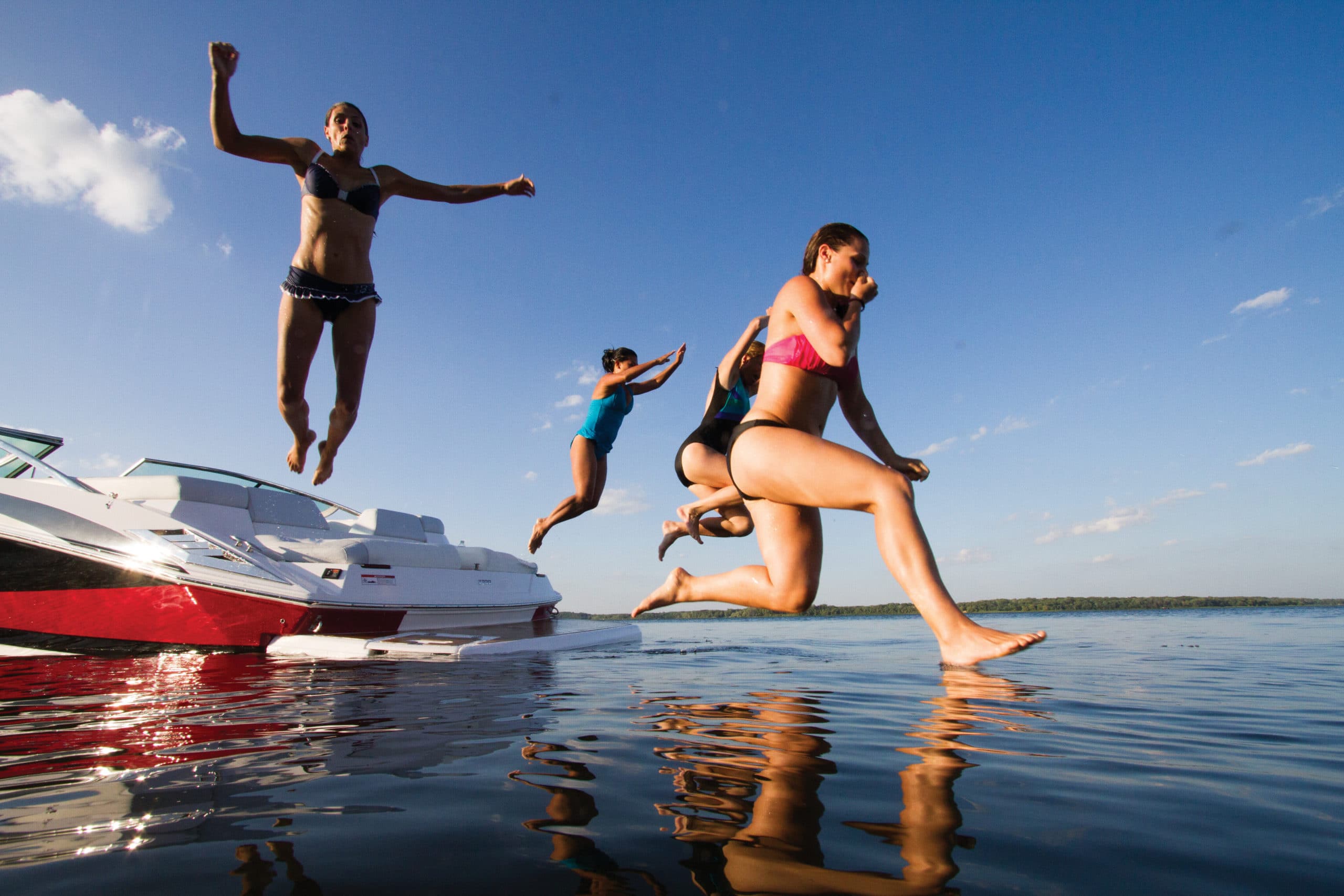
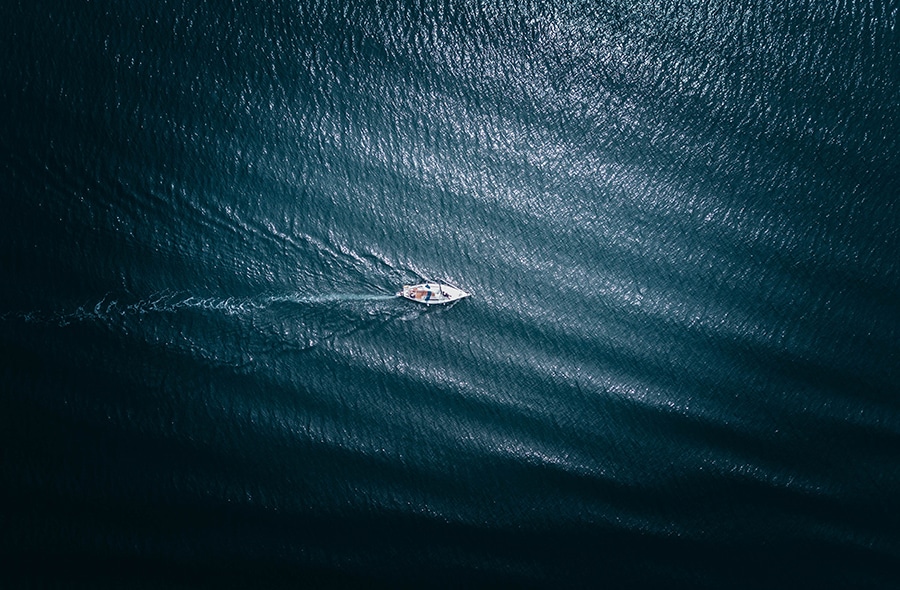

NASBLA & Coast Guard Approved
The BOATsmart! Kansas Boating Safe Class is officially recognized by the United States Coast Guard as coming together the standards of the National Recreational Boating Safety Program. BOATsmart!'s online Kansas Boating Safety Class is approved by the National Clan of State Boating Constabulary Administrators (NASBLA) equally it meets and exceeds U.S. Canoeing Pedagogy Standards. NASBLA develops pedagogy standards for boating safe and represents canoeing police force administrators in all 50 states and U.S. territories.
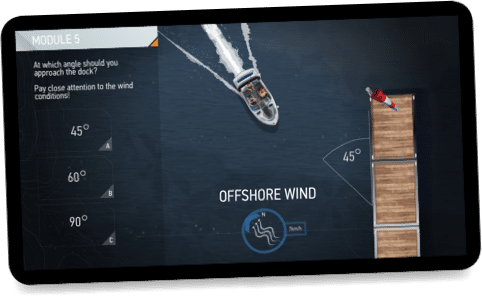
Scout, Heed & Learn
From anywhere, on any device at any fourth dimension.
Our animated and narrated Canoeing Safety Class is perfect for all ages. Study from your Smartphone, Tablet or Desktop and switch between devices at any time. BOATsmart! automatically tracks your progress so you can report at your ain pace.
WHAT IS A KANSAS Boating Safety CERTIFICATE
A Kansas Boater Education Card proves that you've obtained the knowledge needed to safely operate a motorized gunkhole on Kansas waterways. All gunkhole operators born on or after Jan 1st, 1989 are required to become certified to legally operate a motorized gunkhole or PWC within the state.
WHERE Tin can I GET MY KANSAS Canoeing LICENSE?
You tin can get your Kansa Boater Education Carte du jour by completing the Official BOATsmart! Course online. One time you successfully complete the online report guide and terminal exam, you tin can impress a temporary card immediately. BOATsmart! volition mail your permanent bill of fare within 4 weeks.
HOW OLD DO I Take TO BE TO Go A BOATER Card IN KANSAS?
At that place is no minimum historic period to complete the Kansas Boater Teaching Card and get certified.
AGE AND HORSEPOWER RESTRICTIONS
Boaters who are less than 12 years of age are not permitted to operate a motorized boat inside the state, even if they have obtained a Boater Education Carte du jour.
Operators who are more 12 years of age may not operate a boat unless they have obtained a Kansas Boater Education Carte du jour or are directly supervised on lath the boat by an adult who is at least 18 years of historic period, or are exempt from the boater education requirement.
HOW LONG DOES It Have TO Go MY KANSAS BOATING LICENSE?
It takes a minimum of 3 hours to get your Kansas Boater Educational activity Carte online. In one case you've completed the online class and official examination, you tin can print a temporary bill of fare and go boating right abroad. Your permanent menu volition be mailed to you past BOATsmart! within 4 weeks.
Tin can I Get REFRESHER LESSONS AFTER TAKING THE KANSAS Canoeing COURSE?
Yes. Boaters in the land of Kansas can keep up-to-appointment on the latest boating regulations with the costless BOATsmart! Knowledge Base. Learn near boating equipment requirements, navigation and right-of-fashion regulations and restrictions that may employ on Kansas waterways to exist certain that you lot're safe and confident on the water.
DO I NEED A LICENSE TO RENT A Gunkhole IN KANSAS?
Gunkhole operators in Kansas who were born on or afterward January 1st, 1989 are required to successfully complete a Boating Safety Course in order to legally operate any motorized boat or PWC inside the country.
KANSAS Boating AND Booze LAWS
It is illegal to operate any boat on Kansas' waterways while they are under the influence of alcohol, drugs or a combination thereof.
In Kansas, a person is considered to be nether the influence if:
- They are under the influence of booze to a degree that they are incapable of operating safely.
- They are under the influence of whatsoever controlled substance, any other drug, or whatsoever combination of alcohol, controlled substance, or drugs that renders them incapable of operating safely.
- They have a Breath or Claret Alcohol Concentration (BAC) level of 0.08% or higher at the time or within 2 hours afterwards the person operated or attempted to operate the boat.
- They are a pocket-sized (under 21 years of historic period) and they have a BAC level of 0.02% or higher at the time or within ii hours after the person operated or attempted to operate the boat.
FINES AND PENALTIES
In Kansas, a person bedevilled of operating a gunkhole while nether the influence will be subject to the following penalties:
Offset conviction:
- Imprisonment for upward to 1 year and/or a fine up to $500.
Second or subsequent confidence:
- Imprisonment for a minimum of xc days and up to ane year and, in the court'south discretion, a fine of not less than $100 nor more than $500.
PENALTIES FOR MINORS
A person less than 21 years of historic period who has a BAC of 0.02% or greater but less than 0.08% will have their boating privileges suspended for 30 days, upon a first confidence. Boating privileges may exist suspended for up to ninety days upon a second or subsequent conviction.

Nether 12 YEARS OF AGE
Boaters who are less than 12 years of age are not permitted to operate a motorized gunkhole inside the land, even if they accept obtained a Boater Education Document.
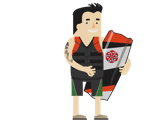
OVER 12 YEARS OF AGE
Operators who are more than 12 years of age may not operate a boat unless they have obtained a Kansas Boater Education card or are straight supervised on board the boat by an adult who is at least 18 years of age, or are exempt from the boater educational activity requirement.

Operating under the influence
Up to $500

Boater Didactics Carte Violations
Up to $500
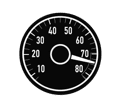
Reckless or Negligent Boat Operation
Upward to $500

Life jacket violations
Upwards to $500

Failure to Report a Boat Accident
Upward to $500
WHO REGULATES BOATING LAWS IN KANSAS?
The Kansas Section of Wildlife and Parks is responsible for regulating canoeing laws in the state of Kansas.
Canoeing Emergencies:
Call 911 to report a canoeing emergency in Kansas
WHO ENFORCES KANSAS' BOATING LAWS?
Boating laws and regulations in Kansas are enforced by:
- Officers of the Kansas Department of Wildlife and Parks
- All other peace officers
- The U.Due south. Declension Guard (on federal waters)
Constabulary enforcement officers have the authority to finish and board vessels to ensure they are in compliance with land and federal laws.
KANSAS Gunkhole REGISTRATION
In order to legally operate a motorized gunkhole or sailboat in the state of Kansas, you must obtain a Certificate of Number (registration card) and validation decals. The Certificate of Number must be carried on board and exist bachelor for inspection by an enforcement officer during boat operation.
Sailboards, stand paddleboards, personal watercraft (PWCs), kayaks, and canoes are considered boats in the state of Kansas.
You can register your boat online, by mail, or in person. For new or re-issued boat registration, an application class is available to download at www.ksoutdoors.com or from the nearest marine dealer, county clerk'southward office, or Kansas Department of Wildlife and Parks (KDWP) State Park or office. Fill out the application completely and mail it forth with the required documents and fee.
Exemptions:
- Boats without whatsoever kind of motor or canvass (human-powered boats).
- Boats which have been registered in another state, and are using Kansas waters for 60 consecutive days or less.
REGISTRATION RENEWAL
Boat owners tin can annals their boat in person at a State Park, a Regional Office or with a Boat Registration Amanuensis. Kansas gunkhole registration is valid for a catamenia of 3 years. Renewal notices are mailed prior to the expiration date. If you've had a change of address or take non received a renewal detect by post, please contact Boating Registration at the KDWP, Pratt Operation office.
Exercise I NEED BOAT INSURANCE IN KANSAS?
Boats in Kansas are not required to exist insured, even so it is recommended.
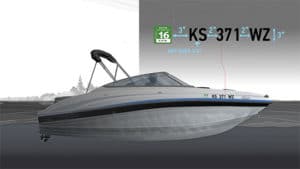
Boats in Kansas are required to correctly display their registration number and validations stickers.
Registration numbers and stickers must be displayed as follows:
- The numbers must be practical every bit a decal, painted or permanently affixed to each side of the boat'south bow (boat owners are non permitted to display any other numbers in this area).
- The numbers must be in bold block letters that are at to the lowest degree 3 inches loftier and in a colour that contrasts with the color of the boat.
- The numbers must exist separated from the letters past a hyphen or past an equivalent infinite.
- The numbers must exist read from left to right.
- Validation decals must be affixed on both sides of the boat and placed 3 inches aft of the numbers.
Note: Sailboards do not require registration numbers to be displayed. Still, the decal must be attached to the front end one-half of the peak of the sailboard.

KANSAS LIFE JACKET LAWS
Kansas law requires all boats to accept at least i wearable life jacket or PFD of proper size, in serviceable condition, non in an enclosed compartment, and readily accessible for each person on board the boat or being towed. This includes stand up human-powered boats and paddleboards.

BOATS More sixteen FT IN LENGTH
Boats 16 feet or longer, except canoes and kayaks, likewise must comport one, Type 4 (throwable) flotation device that is in serviceable condition and not in an enclosed compartment.

PERSONAL WATERCRAFT
Operators of personal watercraft, passengers and anyone beingness towed behind a vessel must article of clothing a U.Due south. Declension Guard-Approved Type I, II, Iii or V PFD. Inflatable lifejackets are excluded. Life jackets worn by a persons being towed are required to be rated for towing activities

CHILDREN 12 YEARS OF AGE AND UNDER
In Kansas, passengers 12 years of age or under are required to habiliment a Declension Baby-sit-canonical, Type I, II or III life jacket while aboard or being towed by a boat. A life belt or ring will non run into the requirement.
RECKLESS OR NEGLIGENT Boat Operation
Information technology is illegal in the land of Kansas to operate whatsoever boat or to manipulate any water-skis, aquaplane or like device in a devil-may-care, reckless or negligent manner so equally to endanger the life, limb or property of whatsoever person.
Examples of reckless or negligent operation include:
- Operating inside 200 feet of a designated swimming area.
- Weaving through congested traffic at more than idle speed.
- Jumping the wake of another gunkhole when unreasonably close to the other gunkhole.
- Waiting until the last possible moment to swerve to avoid a collision.
- Creating a hazardous wake.
- Towing a waterskier in a restricted area or where an obstruction exists.
- Operating a boat in violation of buoy restrictions.
- Failing to observe the navigation rules.
Note: Only a motorized boat used for fishing may be operated in a mooring or launching non-boating area.
SPEED RESTRICTIONS
- Motorized boats on state lakes must be operated at 'No Wake' speed if they are required by posted notice.
- Boats tin not be operated within 200 feet of any area posted specifically for swimming and delineated by buoys or other markers.
- Boats shall be operated at 'No Wake' speeds inside 200 feet of a boat ramp, gunkhole dock, boat storage or concessionaire's facilities.
Environmental Protection
Not-NATIVE AQUATIC SPECIES
Non-native aquatic species, plants, fish and animals are invading Kansas waters. These pests can increment dramatically under the correct conditions, displacing native species, clogging waterways, and impacting navigation and recreation.
Once introduced, they are nearly incommunicable to eliminate, and can be accidentally transported by recreational boaters when caught in propellers, intakes or attached to hulls.
Be sure to report new infestations of non-native aquatic species to the U.S. Fish and Wildlife Service at (209) 946-6400 or written report to Kansas Department of Wild fauna and Parks.
Help PREVENT THE SPREAD OF Not-NATIVE SPECIES
- Inspect all surfaces of your gunkhole and remove aquatic plants or animals before leaving any trunk of h2o.
- Ensure y'all affluent raw-water cooling systems and clean sea-strainers earlier moving your gunkhole from i torso of water to another.
- Empty and dry whatever buckets before leaving a bounding main.
- Remove whatever establish fragments from bait wells, angling gear, trailers, dive gear or props.
- Dispose of found fragments and bait into a garbage receptacle on country.
- Avoid chopping vegetation with your boat'southward propeller.
- Clean and dry out all live-wells prior to transporting your gunkhole.
- Drain all water from your motor and bilge and dry all areas. t.
- Thoroughly wash your boat, including the hull, earlier putting information technology into a new torso of water.
- Refer to specific drying times .
Infestations of non-native species
Written report new infestations of non-native aquatic species to the U.S. Fish and Wildlife Service at (209) 946-6400.
KANSAS AIS REPORTING
Visit https://ksoutdoors.com/Line-fishing/Aquatic-Nuisance-Species/Written report-an-Aquatic-Nuisance-Species to hands written report sightings of AIS in Kansas.
The Sunflower State, Blue Waters, Good Times
BEST Boating LAKES
Where you should plan to launch your boat and hit the h2o will depend on what area of Kansas state you lot plan on visiting. But to help you become the ball rolling, we idea we'd mention just a few of our favorite places to hit the water to go boating in Kansas. These waterways are popular for a reason: Cheney Reservoir, El Dorado Lake, Tuttle Creek Lake, Perry Lake and Pomona Lake.
NATIONAL AND STATE PARKS
What can you expect from the 24 State Parks located in Kansas? Well, for starters, you lot'll discover over 32,000 acres of state to explore and over 130,000 surface-acres of water to access for boating, paddling and fishing activities! You lot'll find landscapes with everything from vast grasslands to rugged canyons here! Start your Kansas outdoor take a chance by going sight-seeing, hiking, camping ground , boating or climbing.
A few of the most pop Land Parks include Cheney State Park and it's prime conditions for sailing, wind surfing or just relaxing on a embankment. In that location'southward likewise Tuttle Creek State Park and information technology's awesome fishing, beaches and boating opportunities. Last but not to the lowest degree (although definitely the driest), is the famous Tallgrass National Preserve in Kansas. Visit Kansas State Parks for more information about the boating opportunities, boat launch access points or the canoeing restrictions that may exist in place in the park you program on visiting.
How Many Boats Are Registered In Kansas,
Source: https://www.boatsmartexam.com/us/kansas/boating-regulations/
Posted by: roccoloond1999.blogspot.com


0 Response to "How Many Boats Are Registered In Kansas"
Post a Comment